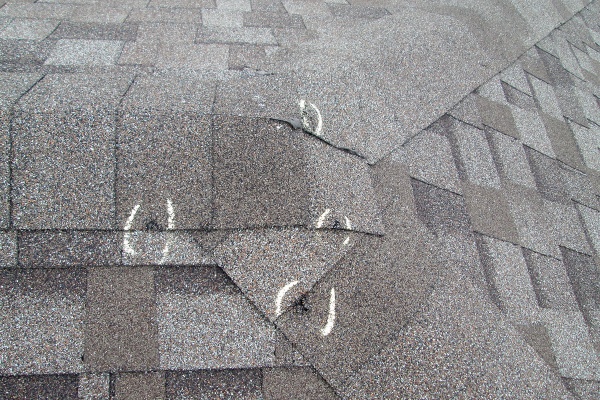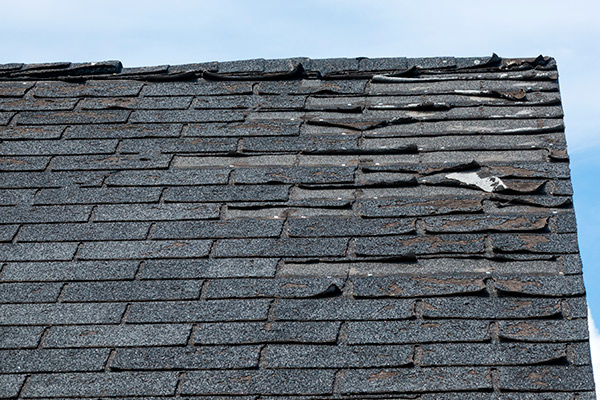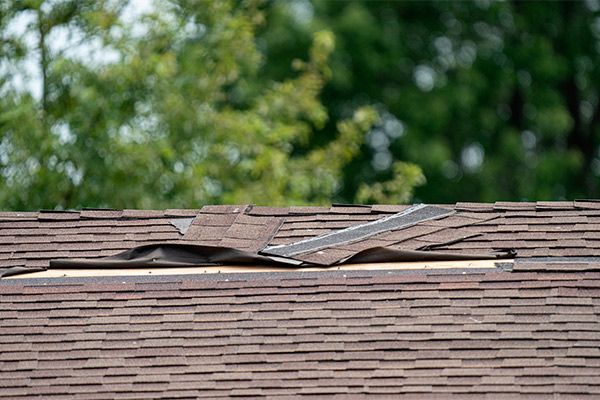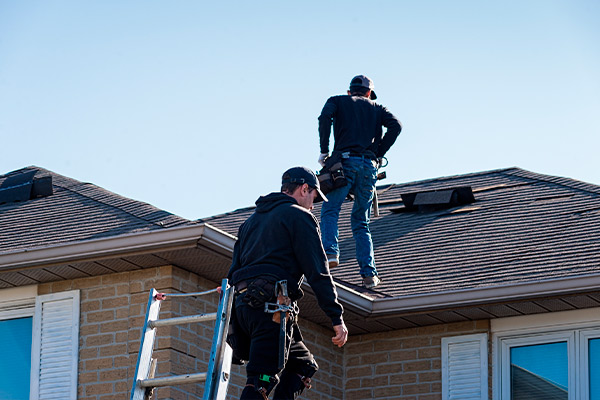The Unique Climate Challenges of the Rio Grande Valley
The Rio Grande Valley (RGV) is known for its scorching summers, with temperatures routinely soaring above 100°F for extended periods. This relentless heat creates unique challenges for homeowners, particularly when it comes to protecting their roofs.
While most roofing materials are designed to withstand various weather conditions, the extreme heat of the RGV puts exceptional stress on these structures.
During peak summer days, your roof can reach temperatures of up to 160°F – hot enough to actually initiate chemical breakdowns in roofing materials. This consistent exposure to extreme heat, combined with intense UV radiation and high humidity levels characteristic of the Valley, creates a perfect storm for accelerated roof deterioration.
Understanding these climate-specific challenges is crucial for RGV homeowners. Heat damage often manifests as cracked shingles, blistering, warping, and color fading – all signs that your roof’s protective capabilities may be compromised.
Identifying these warning signals early can make the difference between a simple repair and a complete roof replacement, potentially saving thousands of dollars. As we explore the five major ways extreme heat affects your roof, you’ll learn to recognize when maintenance is sufficient and when replacement becomes necessary.
What to Look for When Considering Roof Replacement?
1: Intense UV Exposure and Its Effects

Even on seemingly mild days, your roof faces a silent, persistent enemy: ultraviolet (UV) radiation. In the Rio Grande Valley, these invisible rays bombard roofing materials year-round, not just during summer heat waves. What many homeowners don’t realize is that UV exposure accelerates aging of roofing materials by breaking down their molecular structure. This silent degradation happens in winter and cloudy days too, as UV rays penetrate cloud cover with ease.
The effects of constant UV exposure manifest in multiple visible ways. Asphalt shingles often buckle and split as their protective oils evaporate and the material becomes brittle. The most noticeable sign is color fading – those once-vibrant roof shingles gradually bleach to a dull, weathered appearance. This isn’t merely a cosmetic issue; the pigments in roofing materials serve as a defense mechanism against UV penetration. As colors fade, the protective capabilities diminish, accelerating deterioration of the underlying materials.
Perhaps most concerning for RGV homeowners is how UV damage directly impacts energy bills. Roof discoloration significantly reduces its reflective properties, causing it to absorb more heat rather than reflect it away from your home. A roof compromised by UV exposure can absorb substantially more heat, forcing air conditioning systems to work harder and consume more energy. Over time, this translates to consistently higher cooling costs during the Valley’s extended summer months. Beyond UV damage, the intense heat itself causes additional forms of material deterioration that compound these problems.
2: Heat-Induced Material Deterioration
While UV radiation silently degrades your roof at the molecular level, the sheer intensity of direct heat in the RGV creates its own set of problems. On scorching summer days, roof surface temperatures can soar to an astonishing 160°F – hot enough to fry an egg and certainly hot enough to wreak havoc on roofing materials. This extreme heat initiates chemical reactions within the materials themselves, dramatically accelerating their breakdown rate far beyond manufacturer expectations.
The visual evidence of heat damage appears in several distinctive forms. Asphalt shingles often develop cracks as they lose their essential oils and flexibility. Prolonged heat exposure causes shingles to dry out, leading to shrinkage and the formation of blisters across the roof surface. When these blisters eventually pop, your roof loses its protective granules, creating vulnerable spots for water penetration. Even more concerning, the shrinkage can force nails to pop out, significantly reducing your roof’s resistance to wind uplift during storms.
The cumulative effect of these heat-induced issues extends well beyond surface appearance. Each crack, blister, and warped section creates a potential entry point for water, compromising your roof’s primary function as a protective barrier. Metal components like flashing may crack or pull away from surfaces, leaving critical junctures vulnerable to leaks.
For homes with wooden structural elements beneath the roofing materials, prolonged heat exposure can even cause framework to crack and warp over time, potentially leading to more extensive structural concerns. This deterioration becomes even more problematic when combined with another phenomenon common in the RGV: dramatic temperature fluctuations causing thermal shock.
3: The Role of Thermal Shock in Roof Damage

While constant heat poses one threat to RGV roofs, the dramatic temperature fluctuations between scorching days and cooler nights create another damaging phenomenon known as thermal shock. This occurs when roofing materials repeatedly expand under intense daytime heat and then rapidly contract as temperatures drop after sunset. This daily cycle of expansion and contraction places enormous stress on roofing materials, particularly at connection points and seams.
The Rio Grande Valley’s climate makes it particularly susceptible to thermal shock damage. During summer months, surface temperatures can swing by 60-80 degrees between midday and midnight, forcing roofing materials through extreme dimensional changes. Over time, this continuous stress fatigues the materials, causing asphalt shingles to crack and break along stress points. Metal roofing components are especially vulnerable, as they can visibly warp when contracting after extreme heat exposure.
The visible signs of thermal shock damage are distinctive and progressive. Initially, you might notice subtle ridging or buckling along roofing sections. As damage advances, more obvious symptoms appear: shingles begin to crack along straight lines, fasteners work loose as materials expand and contract around them, and nails may even pop out completely, leaving sections vulnerable to wind uplift.
In severe cases, entire shingles can become displaced, creating gaps in your roof’s protective barrier. These exposed areas then become entry points for water during the Valley’s occasional heavy rains, potentially leading to interior water damage. These structural weaknesses become even more problematic when combined with the Valley’s notorious humidity levels, which introduce additional moisture-related challenges.
4: High Humidity and Moisture Challenges
The Rio Grande Valley’s combination of extreme heat and high humidity creates a particularly destructive environment for roofing systems. While heat damage alone is concerning, it’s the interaction between heat and humidity that often accelerates roof deterioration.
High humidity causes moisture to condense on cooler surfaces, allowing water to settle between shingles and underlayment. This trapped moisture creates perfect conditions for water to seep into your home, particularly at connection points already weakened by thermal shock.
The consequences of this moisture accumulation are severe and multifaceted. Initially, dampness creates ideal conditions for mold and algae growth, which appears as dark streaks or patches across your roof’s surface. Beyond these unsightly cosmetic issues, persistent moisture begins breaking down the fundamental components of your roofing system.
The underlayment becomes saturated, wooden structural elements begin to rot, and the continuous wet-dry cycle weakens adhesives and sealants. Left unchecked, these moisture-related problems can compromise your roof’s structural integrity far more quickly than in drier climates.
Fortunately, several preventative measures can significantly reduce humidity-related damage to RGV roofs. Proper attic ventilation is perhaps the most crucial – it prevents moisture from becoming trapped and allows heat to escape, reducing the temperature differential that causes condensation. Regular cleaning and maintenance of gutters and drainage systems ensures water flows properly off your roof rather than pooling in vulnerable areas.
For homes particularly susceptible to humidity problems, specialized moisture barriers installed during roof replacement can provide additional protection. Professional inspections at least twice yearly – ideally before and after summer – can identify early signs of moisture damage before they escalate into major structural issues requiring complete roof replacement.
5: When to Consider Roof Replacement

After understanding how the RGV’s extreme heat impacts your roof, the critical question becomes: when is repair no longer sufficient, and replacement necessary? While minor issues can often be addressed through targeted repairs, certain warning signs indicate a more comprehensive solution is needed.
Multiple layers of cracked or missing shingles, particularly across large sections rather than isolated spots, suggest systemic failure. If your asphalt shingles have lost their granules and flexibility – appearing dry, brittle, and curled at the edges – this indicates advanced deterioration that repairs can’t adequately address.
The age of your roof becomes particularly significant in the RGV climate. While a typical asphalt shingle roof might last 20-25 years in milder regions, the Valley’s extreme conditions can reduce this lifespan by 30% or more. If your roof is approaching 15 years and showing multiple heat-related symptoms, replacement likely offers better long-term value than continuous repairs. Another decisive factor is water intrusion – if you’re experiencing interior leaks, ceiling stains, or attic moisture despite previous repair attempts, these indicate fundamental failures in your roof’s protective capabilities.
Investing in timely roof replacement delivers substantial benefits beyond simply fixing leaks. Modern roofing materials offer significantly improved heat resistance and reflectivity, potentially reducing cooling costs by 15-25% – a considerable saving in the RGV’s extended summers.
Additionally, many newer materials are specifically engineered to resist UV degradation and thermal shock, addressing the very issues that commonly plague Valley roofs. From a property value perspective, a new roof with enhanced heat-management capabilities represents a significant selling point in the local market.
When selecting replacement materials, prioritize options specifically designed for extreme heat. Light-colored shingles reflect significantly more solar radiation than darker alternatives, substantially reducing heat absorption. Consider upgraded underlayment with enhanced moisture barriers to address the Valley’s humidity challenges.
Most importantly, work with roofing professionals experienced in RGV-specific challenges who can recommend appropriate ventilation solutions that allow heat to escape before damaging your new roof. A professional assessment goes beyond simply installing new materials – it addresses the underlying structural and ventilation issues that may have contributed to your original roof’s premature failure.
Protecting Your Roof from RGV’s Extreme Heat

Throughout this article, we’ve examined how the Rio Grande Valley’s extreme heat threatens your roof through five primary mechanisms: intense UV radiation, material deterioration, thermal shock, humidity damage, and discoloration. Understanding these threats is the first step toward protecting your investment. The good news? Proactive measures can significantly extend your roof’s lifespan despite our challenging climate.
Regular professional inspections are your strongest defense against heat damage. Experts recommend scheduling bi-annual roof assessments – ideally before summer begins and after it ends – to identify early warning signs before they escalate into costly problems. Remember that addressing minor issues promptly through targeted maintenance costs significantly less than eventual replacement.
Beyond inspections, several practical strategies can combat the Valley’s heat. Improve attic ventilation to reduce trapped heat and moisture. Consider applying reflective roof coatings or upgrading to light-colored, heat-resistant materials when replacement becomes necessary.
Keep trees trimmed away from your roof to maximize airflow and minimize debris accumulation. Most importantly, partner with roofing professionals who understand the unique challenges of our regional climate. By taking these proactive steps, you can protect both your roof and your wallet from the relentless RGV heat.
Let us help you protect your home and secure your peace of mind. Call now and schedule your appointment with the trusted roofing professionals in RGV!
For more information on our services and additional roof care tips, visit our website or check out our related blog posts on home maintenance. Your roof deserves the best care—make it a priority today!



